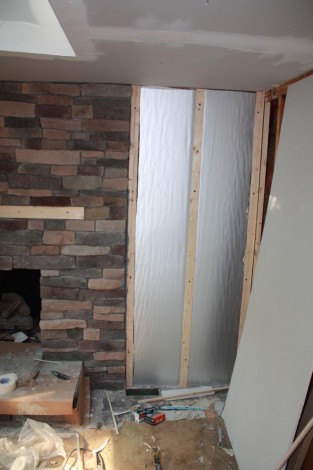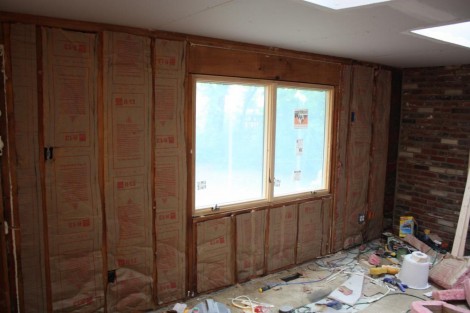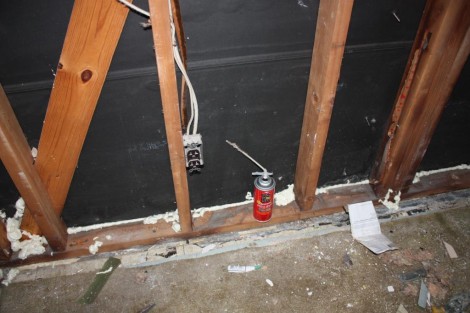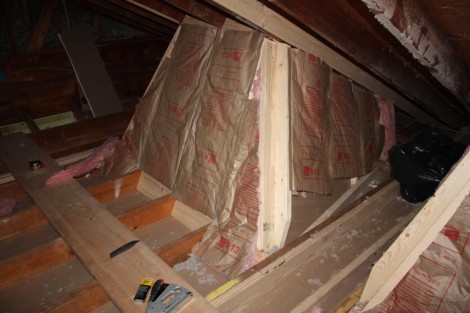In an effort to make the family room as cozy as possible, I’ve used some Great Stuff expanding foam to seal the walls, some fiberglass bats to insulate the walls, a giant pile of cellulose to insulate the ceiling, and some rolls of fiberglass to insulate the skylights. This is the last part of the insulation, and also probaly the most worthless, but I’m doing it anyway. After bolting some wooden furring strips to the brick wall to hang some drywall to, I noticed that there would be a 3/4″ gap in between the drywall and the brick, a perfect spot for some more insulation! This time I’ve used foam board insulation, which has a nice foil backing to help reflect the heat into the room. The foam only adds a few to the R-value, and considering the brick (which is an excellent insulator by itself) is in front of a insulated 2×4 wall, this was undoubtedly overkill, however it was only a few bucks to put in, and it was easy to do.
Categories
Links
Projects
April 2024 M T W T F S S 1 2 3 4 5 6 7 8 9 10 11 12 13 14 15 16 17 18 19 20 21 22 23 24 25 26 27 28 29 30



